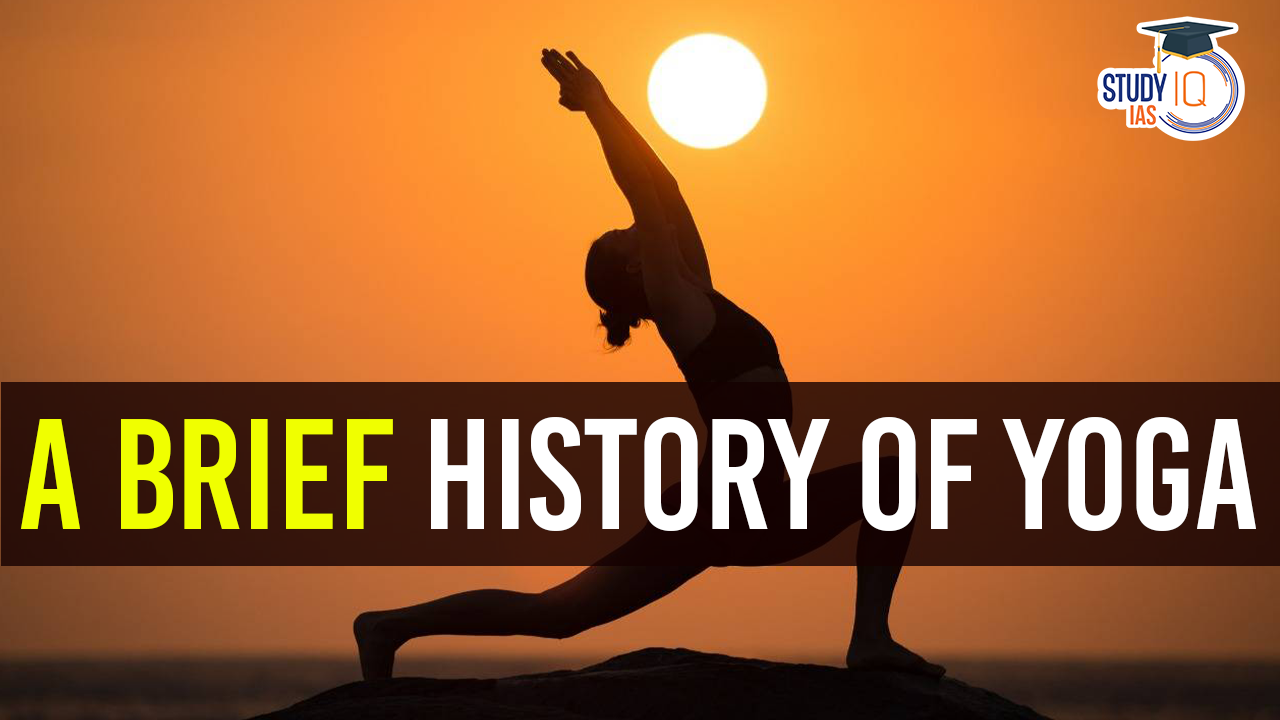Table of Contents
Yoga’s ancient origins in pre-Vedic India led to the development of philosophies and practices over millennia. The Vedas and Upanishads first mentioned yoga, with the classical period seeing the codification of Patanjali’s Yoga Sutras. Post-classical and modern eras witnessed diverse yoga schools and its global dissemination. Influential figures like Swami Vivekananda and contemporary yogis expanded its reach. Today, yoga’s popularity spans the globe, offering physical, mental, and spiritual well-being through various styles and approaches. Check out A Brief History of Yoga in this Article
We’re now on WhatsApp. Click to Join
Origin of Yoga
The term ‘Yoga’ originates from the Sanskrit word ‘yuj,’ meaning to unite or join, reflecting its fundamental purpose. It seeks to harmonize the mind and body, fostering a seamless collaboration. Yoga aspires to connect individual consciousness with the universal, leading to the attainment of moksha, or ultimate liberation. Striving for self-actualization amid challenges, it culminates in kaivalya, true freedom. This practice instills essential human values, guiding individuals towards a sustainable, joy-filled, and grateful lifestyle centered on inner peace.
| Period | Time Frame | Key Developments |
| Pre-Vedic Period | Before 1500 BCE | Origins of yoga believed to date back to this period.
Earliest evidence found in pre-Vedic texts. |
| Vedic Period | 1500–500 BCE | Rig Veda mentions “yoga” in a spiritual context.
Upanishads explore the connection between individual soul and universal consciousness. |
| Pre-Classical Period | 500–200 BCE | Upanishads continue to influence yogic thought.
Bhagavad Gita introduces Bhakti, Karma, and Jnana yogas. |
| Classical Period | 200 BCE–500 CE | Yoga Sutras of Patanjali (2nd century BCE) systematize yogic philosophy.
Eight Limbs of Yoga is introduced, outlining a path to spiritual enlightenment. |
| Post-Classical Period | 500–1500 CE | Various schools of yoga emerged.
Hatha Yoga becomes prominent, focusing on physical postures and breath control. |
| Colonial Period | 18th–early 20th centuries | Yoga faces challenges during British colonization.
Indian yogis share knowledge with Western scholars, sparking interest in the West. |
| Modern Period | Late 19th century–present | Swami Vivekananda introduces yoga to the West (1893).
20th-century yogis like B.K.S. Iyengar, K. Pattabhi Jois, and Swami Sivananda contribute to global popularity. |
| Contemporary Global Practice | Present | Yoga practiced worldwide in diverse forms: Hatha, Ashtanga, Kundalini, Vinyasa, etc.
Widely embraced for physical, mental, and spiritual well-being. Continued evolution and adaptation of yoga practices. |
Pre-Vedic Period (Before 1500 BCE)
The roots of yoga are believed to extend back to the pre-Vedic era in ancient India. This epoch, predating 1500 BCE, is characterized by the emergence of rudimentary yogic practices. Although concrete evidence is scarce, this period set the stage for the later development of yoga, laying the groundwork for its spiritual and philosophical dimensions.
Vedic Period (1500–500 BCE)
The Rig Veda, an ancient sacred text dating back to the Vedic period, introduces the term “yoga” within a context that leans toward spirituality and meditation. Within this timeframe, the Upanishads, a collection of philosophical texts, delve into the intricate connection between the individual soul (atman) and the universal consciousness (Brahman). These texts mark a crucial juncture in the evolution of yogic philosophy, paving the way for future developments.
Pre-Classical Period (500–200 BCE)
The influence of the Upanishads persists during the pre-classical era, continuing to shape yogic thought. Additionally, the Bhagavad Gita, an integral part of the Indian epic Mahabharata, surfaces as a pivotal text. This scripture introduces the concepts of Bhakti (devotion), Karma (action), and Jnana (knowledge) yogas, contributing significantly to the diverse dimensions of yoga.
Classical Period (200 BCE–500 CE)
Around the 2nd century BCE, the Yoga Sutras of Patanjali emerge as a foundational text that systematically organizes yogic philosophy and practice. Patanjali’s Eight Limbs of Yoga delineate a comprehensive path toward spiritual enlightenment, encompassing ethical principles, physical postures (asanas), breath control (pranayama), and meditation.
Post-Classical Period (500–1500 CE)
The post-classical era witnesses the proliferation of various schools of yoga, each emphasizing distinct aspects of the practice. Hatha Yoga gains prominence during this time, focusing on physical postures and breath control as a means to spiritual awakening.
Colonial Period (18th–early 20th centuries)
The advent of British colonization in India poses challenges for yoga, as British authorities view it with suspicion. Despite this, Indian yogis share their knowledge with Western scholars and seekers, sparking interest in yoga in the West and sowing the seeds for its global dissemination.
Modern Period (Late 19th century–present)
In the late 19th century, Swami Vivekananda becomes a key figure in introducing Indian philosophies, including yoga, to the West. The 20th century witnesses the significant contributions of yogis like B.K.S. Iyengar, K. Pattabhi Jois, and Swami Sivananda in popularizing and globalizing various forms of yoga.
Today, yoga is a widely practiced and diverse discipline with styles such as Hatha, Ashtanga, Kundalini, and Vinyasa, transcending cultural and geographical boundaries. The evolution of yoga through these historical periods reflects its adaptability and enduring appeal as a holistic approach to physical, mental, and spiritual well-being.
A Brief History of Yoga UPSC
Yoga’s roots in ancient India trace back to the pre-Vedic period before 1500 BCE, laying the foundation for its evolution. The Vedic era (1500–500 BCE) saw the term “yoga” introduced in spiritual contexts, with the Upanishads exploring the connection between individual and universal consciousness. In the Classical Period (200 BCE–500 CE), Patanjali’s Yoga Sutras systematized yogic philosophy, introducing the Eight Limbs of Yoga. Post-Classical times (500–1500 CE) saw diverse yoga schools emerge, prominently Hatha Yoga. Despite challenges during the Colonial Period, yoga’s dissemination expanded in the Modern Period (late 19th century–present) through figures like Swami Vivekananda, fostering a global practice encompassing Hatha, Ashtanga, Kundalini, and Vinyasa styles for holistic well-being.


 Bonalu Festival 2025: Date, History, Rit...
Bonalu Festival 2025: Date, History, Rit...
 Puri Jagannath Rath Yatra 2025, History,...
Puri Jagannath Rath Yatra 2025, History,...
 Ambubachi Mela 2025: Dates, Rituals, Sig...
Ambubachi Mela 2025: Dates, Rituals, Sig...





















